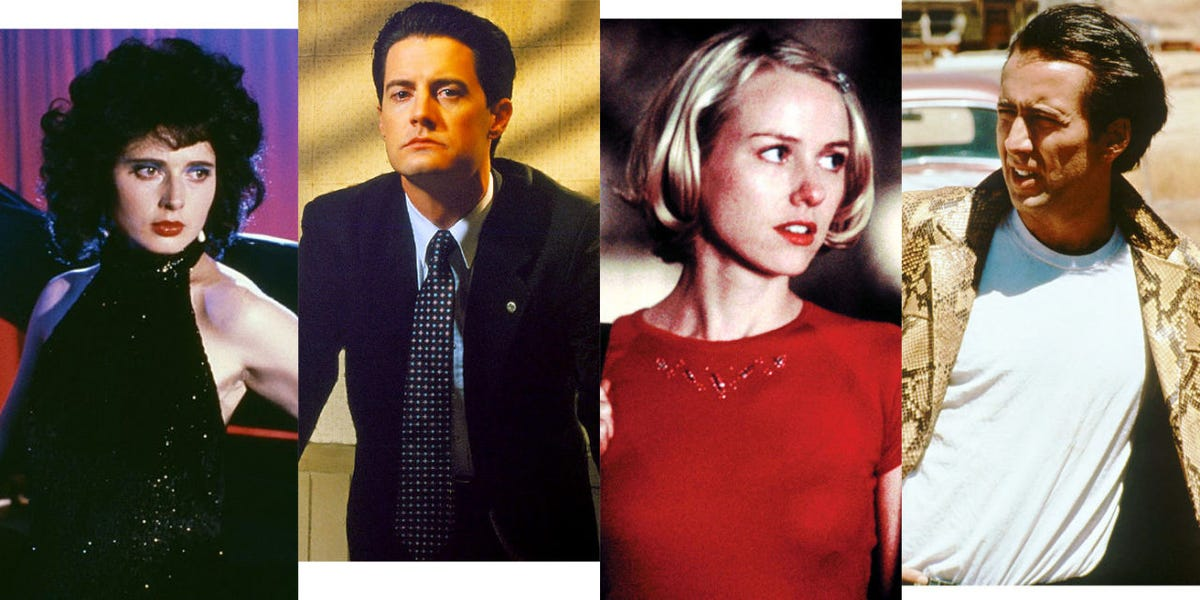David Lynch films have long captivated audiences with their unique blend of the surreal and the familiar. Renowned for his distinctive style that often transcends traditional storytelling, Lynch’s cinematic works, including the iconic “Blue Velvet” and the groundbreaking “Twin Peaks,” reflect his masterful manipulation of suspense and symbolism. To appreciate the profound impact of David Lynch, one must delve into the intricate layers of his narratives, often referred to as Lynchian cinema—an eclectic avenue where beauty meets horror, and normalcy blends with the uncanny. As viewers engage in “Blue Velvet analysis,” they discover Lynch’s uncanny ability to evoke visceral emotions and challenge conventional perceptions of reality, further solidifying David Lynch’s legacy in the annals of film history. The significance of “Twin Peaks” and its radical narrative structure continues to influence contemporary filmmakers and offers a rich terrain for exploring the psychological nuances embedded within Lynch’s artful storytelling.
Exploring the visionary work of David Lynch reveals a treasure trove of cinematic innovation and creativity that captivates film enthusiasts across generations. Lynch’s films, known for their perplexing narratives and haunting imagery, represent a landmark contribution to modern filmmaking that goes beyond mere entertainment. The term “Lynchian” has evolved to convey the distinctive hallmarks of his work, characterized by a surreal blend of darkness and humor that invites deeper contemplation. In examining the legacy of this auteur, one must also consider the far-reaching influence of his acclaimed titles, such as “Blue Velvet” and “Twin Peaks,” which have prompted extensive critical discourse. Through this lens, the depth of Lynch’s artistry and its resonance within both cinema and popular culture become all the more apparent.
The Legacy of David Lynch’s Cinematic Language
David Lynch’s legacy is not merely defined by his films but by his uniquely unsettling cinematic language that captivates audiences across generations. His ability to blend the familiar with the strange creates a surreal atmosphere that challenges viewers’ perceptions of reality. This ‘Lynchian’ approach is evident in masterpieces like “Mulholland Drive” and “Blue Velvet,” where ordinary settings are infused with disquieting tensions. These films extend beyond entertainment; they delve into the depths of human psychology, drawing parallels with the works of artists like Francis Bacon and Sylvia Plath, who also grappled with the darker facets of existence.
The lasting impact of Lynch’s style can be discerned in numerous modern filmmakers who cite him as an influence. His innovative narrative techniques and visual storytelling have paved the way for a more avant-garde approach in contemporary cinema. Lynch’s films continue to spark discussions about the boundaries of storytelling in film, giving rise to the term ‘Lynchian’ — signifying works that emulate his blend of dark humor, absurdity, and complex emotional landscapes.
Understanding the Significance of ‘Blue Velvet’
“Blue Velvet” stands as a cornerstone of Lynch’s filmography, encapsulating the themes of innocence and corruption that permeate much of his work. Set against the backdrop of a seemingly idyllic small town, the film’s examination of darkness lurking beneath the surface resonates with viewers by confronting the duality of human nature. With its striking imagery and haunting score, “Blue Velvet” effectively evokes a sense of unease and curiosity. The film is not just a narrative; it’s an experience that compels audiences to reflect on societal norms and personal morality.
Analyzing “Blue Velvet” reveals Lynch’s mastery of atmosphere and mood, combining striking visuals with a compelling score. Its infamous scenes challenge viewers to confront uncomfortable truths about human relationships and the facades we maintain. Through visceral storytelling and meticulous cinematography, Lynch crafts a film that remains utterly impactful, encouraging audiences to revisit its layers of meaning over and over again, showcasing the depth of his artistic vision and the profound significance of his contributions to cinema.
The Enduring Influence of ‘Twin Peaks’
“Twin Peaks” redefined television narrative and aesthetics, blending soap opera sensibilities with surreal elements that only Lynch could orchestrate. Its groundbreaking structure introduced viewers to an intricately woven mystery filled with eccentric characters and dreamlike sequences that challenged conventional storytelling. As the show navigated themes of duality, loss, and surrealism, it laid the groundwork for future television series seeking to imbue depth and complexity into their plots.
The show’s impact can still be felt today in how series are crafted, from character development to the emotional weight of narratives within episodic formats. Lynch’s ability to merge haunting imagery with poignant storytelling set a new standard for television, inspiring countless creators to adopt a more cinematic approach. The enduring allure of “Twin Peaks” exemplifies how Lynch’s works foster a community of fans deeply invested in unraveling its mysteries, highlighting Lynch’s influence on the landscape of modern television.
Decoding the Lynchian Aesthetic
The Lynchian aesthetic is characterized by its unsettling visual compositions, unexpected narrative turns, and immersive sound design. Lynch’s films often juxtapose contrasting elements, creating a dissonance that captures the complexity of the human experience. This aesthetic invites viewers into his dreamlike worlds, where the bizarre coalesces with the recognizable, pushing the boundaries of conventional filmmaking. By harnessing a distinct visual style that includes stark lighting, unusual framing, and unsettling soundscapes, Lynch invites viewers to explore themes of identity and reality.
Just as artists like Salvador Dalí challenged perceptions with their surreal work, Lynch’s films provoke introspection and analysis, creating a space for audiences to confront their fears and desires. This multi-layered approach to film not only enriches the narrative but also enhances its aesthetic, making Lynch’s works an essential study for those wishing to understand the evolution of cinematic language in the 21st century.
The Polarities of Lynch’s Storytelling
One of the hallmarks of Lynch’s storytelling is the seamless integration of conflicting themes that coexist within the narrative. He frequently juxtaposes beauty with grotesqueness, laughter with dread, and innocence with malice, resulting in a narrative complexity that captures the viewer’s imagination. Such polarities are not merely stylistic choices; they serve as commentary on the nature of reality, reflecting humanity’s own contradictions. Through figures like Laura Palmer, Lynch navigates the landscape of trauma, memory, and the search for truth amidst chaos.
This duality in Lynch’s storytelling highlights the emotional and psychological depth that resonates with audiences. For instance, his interpretations of Americana, often idealized, are subverted to reveal the sinister undercurrents of suburban life. This exploration of the fractured American dream invites viewers to question their perceptions of reality, providing a rich tapestry of themes that reverberate long after the credits roll.
Lynch’s Contributions to Experimental Cinema
David Lynch’s unique approach to filmmaking has placed him at the forefront of the experimental cinema movement. By embracing unconventional narratives and surreal imagery, Lynch has expanded the possibilities of the medium, inviting audiences to engage with film not just as entertainment but as an art form capable of evoking deep emotional reactions. His early work, like “Eraserhead,” is a testament to his willingness to push boundaries and challenge audience expectations, producing visceral experiences that often defy traditional storytelling.
Lynch’s contributions extend beyond mere artistic innovation; they disrupt the norms of narrative cinema, inviting filmmakers to experiment with form and content. His influence can be seen in the works of contemporary directors who draw inspiration from his ability to blur the lines between reality and imagination, thus demonstrating how Lynch has paved the way for the embrace of non-linear storytelling and abstract themes in modern filmmaking.
The Cultural Impact of David Lynch’s Films
The cultural impact of David Lynch’s films is profound and far-reaching, echoing through various artistic disciplines and societal discussions. As a filmmaker whose works delve into themes of trauma, identity, and the uncanny, he has cultivated a distinct narrative voice that resonates with audiences. Films like “Blue Velvet” and television series such as “Twin Peaks” continue to spark debates about morality and duality in society, underscoring Lynch’s position as a cultural commentator who examines the contradictions inherent in the human experience.
Moreover, Lynch has influenced artists across genres, showcasing how film can act as a catalyst for cultural dialogue. His unique perspective challenges viewers to confront uncomfortable truths, making his work relevant in discussions surrounding mental health, societal norms, and the nature of reality. The conversations initiated by Lynch’s movies contribute to a larger understanding of the complexities of modern life, ensuring that his legacy persists long after his passing.
Reassessing the David Lynch Legacy Posthumously
In the wake of David Lynch’s passing, the film community is left to grapple with his extensive body of work, reevaluating the lasting impact he has had on cinema and television. Art critics and filmmakers are revisiting his films through new lenses, acknowledging not only their innovative storytelling techniques but also their emotional depth. This reassessment invites new generations of viewers to engage with his work, uncovering layers of meaning previously overlooked.
As we reflect on Lynch’s contributions, it becomes apparent that his legacy is not confined to his cinematic achievements. His explorations of surrealism and the human psyche have unlocked new avenues for creative expression, inspiring countless aspiring filmmakers to embrace the unconventional. The future of cinema will undoubtedly continue to be shaped by the deep and rich exploration of the complexities of life that Lynch so masterfully navigated in his films.
Frequently Asked Questions
What defines Lynchian cinema and how does it manifest in David Lynch’s films?
Lynchian cinema is characterized by a unique blend of the bizarre and the banal, often evoking existential dread while challenging perceptions of reality. In David Lynch’s films, such as ‘Blue Velvet’ and ‘Mulholland Drive’, this distinctive style manifests through unconventional narratives, striking visuals, and atmospheric sound design that creates a dreamlike quality, keeping audiences both intrigued and unnerved.
What is the significance of Twin Peaks in the context of David Lynch’s legacy?
The significance of ‘Twin Peaks’ in David Lynch’s legacy cannot be overstated; it redefined television by introducing a complex narrative structure and an enigmatic storytelling approach. The series combined elements of horror, mystery, and surrealism, influencing countless shows that followed. It solidified Lynch’s impact on the medium, showcasing his ability to transcend traditional formats and leave a lasting mark on popular culture.
How does Blue Velvet analyze the theme of duality in American life?
In ‘Blue Velvet’, David Lynch masterfully analyzes the theme of duality within American life by contrasting the idyllic surface of small-town America with the lurking darkness beneath. The film juxtaposes innocence with terror, revealing the unsettling truths that exist alongside familiar suburban tranquility, thereby challenging viewers to reconsider their perceptions of reality and morality.
What is the cultural impact of David Lynch’s films on contemporary cinema?
David Lynch’s films have significantly shaped contemporary cinema by pushing the boundaries of narrative form, visual style, and character development. His influence can be seen in the works of numerous filmmakers who adopt his surreal, dreamlike approach and willingness to explore the darker aspects of human nature, further solidifying Lynch’s legacy as a pioneer of modern filmmaking.
In what ways do David Lynch’s films maintain cross-generational appeal?
David Lynch’s films, such as ‘Mulholland Drive’ and ‘Eraserhead’, maintain cross-generational appeal through their timeless themes of identity, fear, and the subconscious. His ability to evoke emotional and intellectual responses through rich symbolism and compelling narratives resonates with diverse audiences, drawing both new viewers and seasoned fans who appreciate his unique vision.
Why is it important to experience David Lynch’s films on the big screen?
Experiencing David Lynch’s films on the big screen is crucial as it enhances the visual and auditory elements that define his work. The immersive experience of watching films like ‘Fire Walk With Me’ in a theater allows audiences to fully appreciate the intricate details of cinematography and sound design, which are integral to understanding Lynch’s cinematic language.
How do David Lynch’s artistic influences shape his filmmaking style?
David Lynch’s artistic influences, rooted in his background as a painter and sculptor, profoundly shape his filmmaking style. His visual sensibility translates into meticulously crafted scenes that prioritize atmosphere and emotion, making Lynch’s films not only visually engaging but also rich with layered meanings and interpretations.
What aspects of David Lynch’s films contribute to their unsettling nature?
The unsettling nature of David Lynch’s films arises from their juxtaposition of the familiar and the surreal, often portraying ordinary situations that devolve into the bizarre or violent. His use of soundscapes, non-linear storytelling, and ambiguous characters creates an environment of tension and discomfort, immersing viewers in a world where the line between reality and nightmare blurs.
| Aspect | Details |
|---|---|
| David Lynch’s Legacy | Lynch is celebrated for films that blend beauty, terror, and complexity, contributing significantly to American cinema in the late 20th century. |
| Core Themes | His films explore the uncanny, revealing dark undercurrents in familiar settings, such as small-town America in ‘Blue Velvet’. |
| Film Screenings | The Harvard Film Archive screened ‘Eraserhead’, ‘Fire Walk With Me’, and ‘Wild at Heart’ to celebrate Lynch’s cinematic journey. |
| Cinematic Techniques | Lynch’s unique storytelling resonates with audiences across generations, combining elements of horror, humor, and complexity. |
| Influence on Television | ‘Twin Peaks’ changed the landscape of television, infusing it with sophisticated narratives and stylistic depth not previously seen. |
Summary
David Lynch films are recognized for their distinctive narrative style, merging the ordinary with the bizarre. Even after his recent passing, his influence on cinema and television remains profound. Lynch’s ability to evoke deep emotional responses through richly textured filmmaking ensures that audiences will continue to discover and engage with his work for generations to come.



